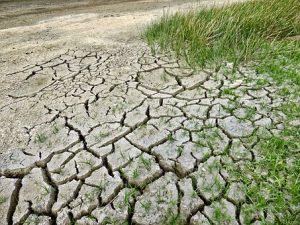
Meryl Compton
January 2016
With the recent year of historic climate action behind us, it’s now time to gain some perspective about where the general public stands on issues related to climate and clean energy. By carefully studying the full complexity of public opinions, and identifying significant gaps between mass public and expert opinions, it is possible to improve communication, policy strategy, and public engagement so that real change can happen. By considering public opinions when developing a course of action, the public is then given the ability to influence policymakers and major institutions, and to help establish national priorities.
Although a majority of Americans trust the scientific community and believe that climate change is real, the public’s confidence has remained more or less the same since the mid 2000’s. John Krosnick of Stanford University’s Woods Institute for the Environment conducted a survey in 2010, which showed that 75% of Americans believe temperatures have been rising and 70% are confident in what scientists say regarding the environment 10. Several ongoing surveys actually show a small decline in people’s belief in climate change over the last couple of years. Gallup has been tracking climate-related trends, such as the public’s worry, since 2001, and reports that worry was at its lowest point last year8. Aside from small fluctuations, over the last five years, the percentage of Americans who believe climate change is already occurring has remained steady at around 55%, and even the extreme weather of the 2014-2015 winter didn’t seem to sway the public8.
Several surveys have been monitoring public concern about climate change over the last 5 to 10 years, and the Pew Institute has been tracking these changes globally. Pew confirms what the US-only surveys found, reporting very small changes in overall concern, aside from noticeable declines in China and Japan7. Of course, there is a lot of variation among nations and within larger regions, but for the most part, there is still a lot of ambivalence about the importance of climate change. While it is unfortunate that climate change, and its scientifically confirmed causes, are not more widely accepted, some new polls show that this may begin to change in the near future6. A joint survey by Yale University and George Mason University showed that the public’s certainty might be shifting; those who already think climate change is occurring are becoming more sure, while those who do not are becoming less and less so2. It seems that even the climate change deniers may be starting to doubt their own skepticism. It also seems that a more precautionary approach towards environmental matters is becoming more popular. According to a New York Times and CBS News poll, 54% of Americans would choose to protect the environment over stimulating the economy in a situation where a sacrifice had to be made9.
There has been a lot of progress in the climate and energy fields, and the majority of the scientific community is clearly in agreement regarding the reality of climate change and its causes6. So why haven’t the general public’s attitudes about these issues caught up? It is a complicated question, and there is no one simple answer. It is challenging to change people’s perceptions in general, especially when there appears to be confusion and uncertainty among scientists and political leaders, or when your family, neighborhood, or entire community is of a particular point of view. It is also difficult to gain support for a burdensome issue, such as climate change, that threatens our way of life, and that people expect will involve personal sacrifice and effort in the future. For most people, because there are already so many pressing issues to deal with, it’s simply easier to push climate change aside for as long as possible, and avoid feeling any guilt or fear. Eula Biss of Northwestern University believes that the media can also have a major influence on the public’s perceptions of critical scientific issues1. Many people rely on popular and social media, rather than media based on well-respected, objective, and scientific publications, which leads to oversimplification and misinformation about many key issues. So, even though there is a consensus among experts, if the popular media does not provide current and accurate information, the general public’s perceptions of climate change will be fragmented and perpetually out-of-date. Also, there are a staggering number of news sources, which makes it possible for people to cherry-pick the type of news they see and which viewpoints they’re exposed to. This enables individuals, and even whole communities, to reinforce almost any worldview or mental model, and even to ignore an issue altogether. Sometimes it may be unintentional, but either way, it’s easy to develop a skewed perspective on climate change. Hopefully, with a more effective and accurate distribution of information, the public’s view of climate change can be more aligned with that of the experts. In addition, Krosnick believes that extreme weather events and noticeably warmer temperatures will eventually convince a greater number of people that climate change is already happening around the world10.
Believing in climate change does not mean the same thing to everyone; people vary greatly in the nature of their concern and in their beliefs about the cause of warming and necessary courses of action. Another Stanford survey confirms that a large majority of Americans think that climate change is a real and a serious global problem, and that it may continue to worsen. However, this doesn’t necessarily mean that people are very concerned at the moment. In fact, the number of people who believe that a 5°F warming (over the next 75 years) would be bad has fallen from 64% in 2007 to 53% in 20123. A recent National Survey on Energy and the Environment showed an interesting contrast between the high percentage of both Americans and Canadians that say there is solid evidence of climate change, and the much lower percentage that believe warming is primarily due to human activity5. It seems that, although most Americans believe scientists when they say that climate change is occurring, many are still reluctant to believe that humans and our way of life are to blame. In the US, only 40% of residents believe that climate change is primarily due to human activity, while most believe that it is due to either a combination of human and natural factors or exclusively natural factors5. The public debate over the greatest contributor to climate change may be partly fueled by the perception that there is no consensus among scientists. Also, since the Earth has already undergone major climatic transformations in its geologic history, all of which were due to natural forces, it is understandable why so many people think that present day climate change is natural as well. Although it’s likely that, if the contexts, causes, and timescales of these previous shifts were thoroughly understood by the general public, many more people would acknowledge how big of a role humans play.
Of course, America is quite a large country, so national averages don’t always give the complete picture. For most climate-related matters, there is substantial variation among states, as well as the counties, cities, and neighborhoods within each one. For example, a 2013 Stanford survey showed that, although nation-wide about 75% of Americans believe humans are partly responsible for warming, the percentage varies from 65% in Utah to 92% in Rhode Island4. There are many areas in the US where there is doubt about future warming and contention over humanity’s role in climate change. This variance can partly explain the discrepancy between Americans’ overall perception that climate change will be a serious problem and their uncertainty that warming is a result of human activity.
It is interesting, and sometimes disheartening, to explore the public’s attitudes about climate change, and to realize that America is one of the least concerned and most doubtful nations in the world. Fortunately, those are only two statistics and there is far more complexity involved. There are also many motivated and thoughtful people who will continue to confront climate change and inspire others to follow their lead. By participating in movements and societal debates, and by sharing ideas and discussing solutions, everyone can have a part in shaping the global response to climate change.
